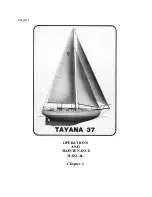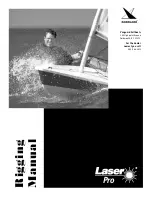
”Moto” Configuration
It is recommended to deploy and stow
the “moto” seat when the watercraft
is out of the water or securely docked.
If not possible, it should be done on
calm water. Refer to the
“MOTO”
SEAT RELEASE BUTTON
for detailed
installation procedure.
WARNING
To avoid loss of control and colli-
sions before deploying or stowing
the “moto” seat:
– Stop the watercraft in a safe
area, away from traffic or obsta-
cles.
– Turn off the engine.
– Be on the look out for other
crafts or obstacles. Your water-
craft could drift while changing
configuration.
WARNING
To avoid loss of control, always
make sure that seat is properly
locked in prior to operating the
watercraft.
WARNING
In the “moto” configuration, the
proper riding position is to sit
straddled on the “moto” seat with
both feet resting firmly on the
deck. Other riding positions may
not allow to remain in control
of the watercraft or may not offer
enough visibility of your surround-
ing, which could lead to accidents,
collisions and possible serious in-
juries.
Kart Configuration
(if so equipped)
Refer to the
KART SEAT LEVER
sec-
tion for detailed installation procedure.
WARNING
– Only install or remove the kart
seat when the watercraft is out
of the water or docked securely
on calm water.
– To avoid loss of control, always
make sure that seat is properly
locked in and that the steering
pole is locked down, prior to op-
erating the watercraft.
WARNING
– In the kart configuration, the
proper riding position is to sit on
the kart seat. It is not advisable
to ride in the “vert” position (i.e.
in a stand-up position) when the
kart seat is installed, but if this
is unavoidable, proceed at low
speed with extra caution. Other
riding positions may not allow
to remain in control of the wa-
tercraft or may not offer enough
visibility of your surrounding,
which could lead to accidents,
collisions and possible serious
injuries.
– Never sit on the kart seat back-
rest for riding.
This position
does not allow sufficient control
of the watercraft and could lead
to serious injuries.
Rough Water or Poor
Visibility Operation
Avoid operation in these conditions. If
you must do so, proceed with caution
and prudence using minimum speed.
Crossing Waves
Reduce speed.
Always be prepared to steer and bal-
ance as necessary.
When crossing wakes, always keep a
safe distance from watercraft ahead.
_____________________
61
Summary of Contents for 2006 3D RFI
Page 8: ...6 _______________________ ...
Page 9: ...SAFETY INFORMATION ____________ SAFETY INFORMATION ____________ 7 ...
Page 27: ...VEHICLE INFORMATION _____________________ 25 ...
Page 72: ...70 ______________________ ...
Page 73: ...MAINTENANCE INFORMATION _____________________ 71 ...
















































